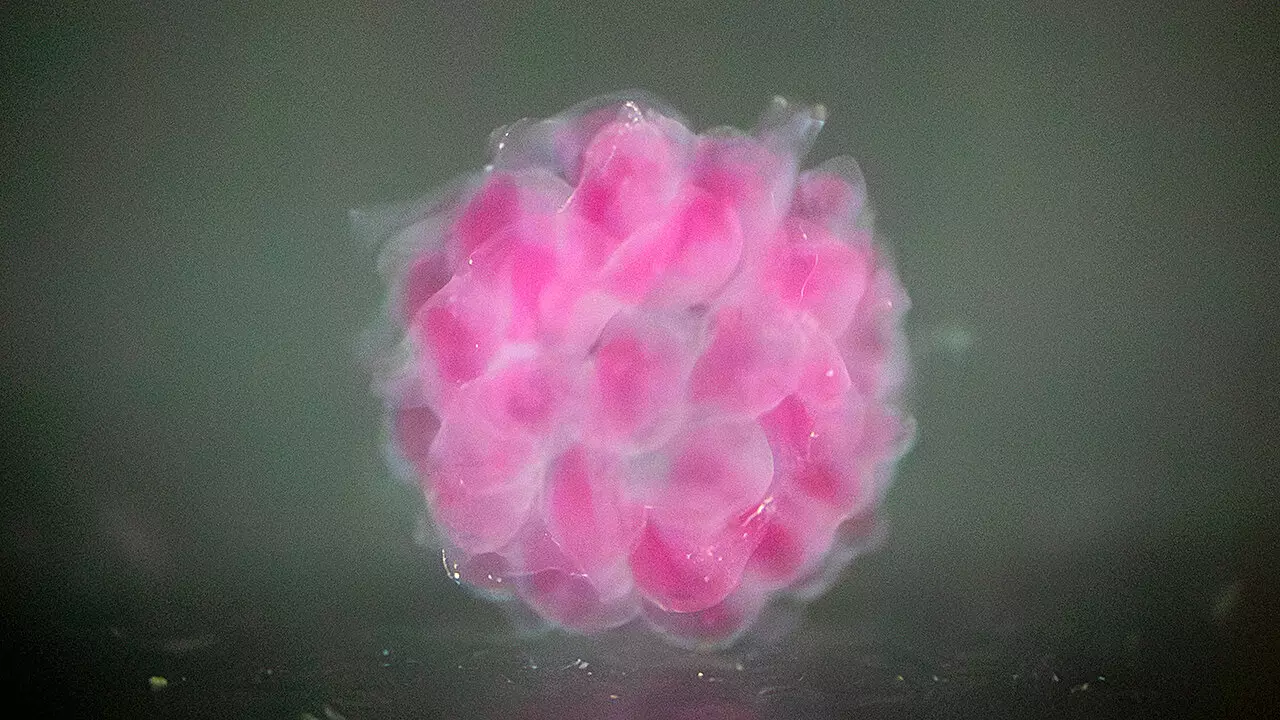In a remarkable advancement in the field of regenerative medicine, researchers at the University of Virginia have pioneered a method that could revolutionize organ fabrication. Led by assistant professor Liheng Cai and Ph.D. student Jinchang Zhu, the team has developed innovative biomaterials that aspire to closely mimic human tissue properties. In their recent publication in Nature Communications, they unveil the digital assembly of spherical particles (DASP) technique, which opens up a plethora of possibilities for creating functional, human-compatible organs on demand.
This research signifies a substantial leap from conventional bioprinting technologies. Where traditional techniques may limit the form and function of printed tissues, DASP promises to offer contemporary solutions that not only replicate the mechanical properties of biological tissues but also enables the integration of live human cells. Zhu noted that the precision inherent in their biomaterials allows for significant advances in creating organoids, miniaturized organs that facilitate direct study of human physiology and disease progression. This capability could be critical in drug development and personalized medicine, allowing scientists to assess the effectiveness of treatments before applying them to patients.
The Science of Building Blocks: Understanding DASP
At the core of DASP lies a novel approach to biomaterial construction. By employing a method that utilizes hydrogel particles in a supportive, water-based matrix, the researchers are able to create three-dimensional structures that enable cell growth under optimal conditions. The term “voxel,” representing a volumetric pixel, encapsulates the technology’s essence—making it possible to manipulate physical and biological characteristics at a micro level.
The ingenious aspect of their method is the manipulation of polymer hydrogels to achieve a double-network structure, which provides enhanced mechanical strength while still being sufficiently pliable to mimic the variability found in human tissues. This constitutes a significant refinement over previous iterations of their technology. The introduction of “click chemistry,” a fast method of cross-linking the molecular chains, has expedited the formation of these hydrogels, allowing the team to produce high-quality constructs much quicker than before.
The Challenges of Bioprinting: Overcoming Obstacles
The team faced considerable challenges in their quest for accuracy and efficiency. One pressing issue was the rapid cross-linking of hydrogel components, which required innovative solutions. Standard pre-mixing could not be employed since the cross-linking process was so rapid that it would hinder operational efficiency.
The outcome was the development of a multichannel nozzle within the bioprinter, enabling real-time mixing and the precise delivery of hydrogel droplets. This technique not only maintains the required properties of the material but also ensures that each droplet retains its mechanical characteristics upon deposition, a crucial factor in mimicking human tissue.
While Cai acknowledged the technological hurdles involved in the precise manipulation of viscoelastic voxels, he remains optimistic about the future applications of DASP. From artificial organ transplantation to disease modeling, the scope of this pioneering technology offers hope for myriad medical advancements.
Implications for the Future of Medicine
As we stand on the brink of a new era in bioprinting, the implications of DASP are profound. If fully realized, this technology could alter the fundamental approach to organ transplantation, potentially addressing the critical shortage of donor organs. Imagine a future where waiting times for organ transplants diminish, and patients receive tailored organs that are less likely to be rejected by their immune systems.
Furthermore, the potential for utilizing organoids in drug testing could profoundly shift how pharmaceutical research is conducted. The ability to create patient-specific models means treatments could be evaluated for effectiveness on a personal basis, paving the way for personalized therapies that are more effective and less harmful.
In summation, the development of DASP represents a crucial milestone towards the proliferation of bioprinting technologies that can respond to human needs. The passion and innovation shown by the University of Virginia team not only marks a step forward in engineering and materials science but also meticulously bridges the gap between technology and human health, possibly reshaping the landscape of medicine as we know it.


Leave a Reply